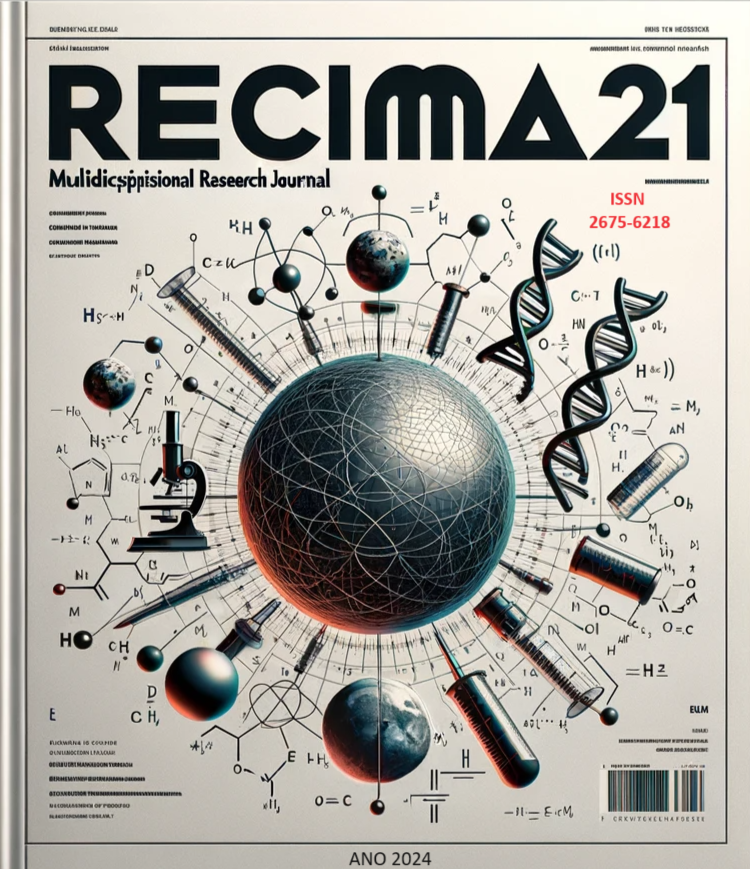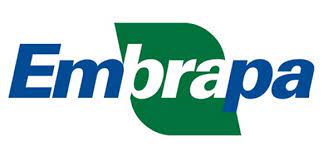THE INTERCONNECTION BETWEEN TREFOIL FACTOR AND GASTROESOPHAGEAL REFLUX DISEASE (GERD): A LITERATURE REVIEW
DOI:
https://doi.org/10.47820/recima21.v5i7.5424Keywords:
Gastroesophageal reflux. Trefoil factor., reflux diseaseAbstract
Gastroesophageal reflux disease is characterized by the return of food contents from the stomach to the esophagus and can be explained by the transient relaxation of the lower esophageal sphincter that allows the return of acid, causing lesions characteristic of GERD in the stomach. In addition, the trefoil factor (TFF) and its family have beneficial properties capable of commanding responses against pathogens, lesions or threats. Thus, the present study aims to understand and describe, through an integrative review of the literature, the relationship between the trefoil factor and gastroesophageal reflux disease. This article is an integrative review of the structured literature based on the development of the problem established where they were searched in the SciELO, PUBMED, AND VHL databases. In this context, there are few studies that point out the influence of TFF on GERD. In patients affected by the disease, TFF3 was found in gastric cardia biopsies. In addition, it was certified that TFF3 and toll-like receptor 2 (TLR2) signaling are connected to increase the integrity of the epithelium, since they modulate the expression of close-junction proteins. With this, it was found that TFF2 and TFF3 induce the release of interleukins (IL), such as IL-6 and IL-8. Therefore, it is concluded that even with a limited number of studies, it was possible to identify a correlation between the trefoil factor and gastroesophageal reflux disease, since the peptide TFF3 was present in biopsies of the cardia region of individuals with this pathology, causing inflammation of the gastroesophageal junction.
Downloads
References
CHHABRA, P.; INGOLE, N. Gastroesophageal Reflux Disease (GERD): Highlighting Diagnosis, Treatment, and Lifestyle Changes. Cureus, v. 14, n. 8, 29 ago. 2022. Disponível em: https://pubmed.ncbi.nlm.nih.gov/36185857/. Acesso em: 20 jan. 2024. DOI: https://doi.org/10.7759/cureus.28563
FABISIAK, A. et al. Possible application of trefoil factor family peptides in gastroesophageal reflux and Barrett’s esophagus. Peptides, v. 115, p. 27–31, 1 maio 2019. Disponível em: https://pubmed.ncbi.nlm.nih.gov/30831146/. Acesso em: 20 jan. 2024. DOI: https://doi.org/10.1016/j.peptides.2019.02.007
JÚNIOR, R. G. R. et al. Doença do Refluxo Gastroesofágico: fisiopatologia, manifestações clínicas e abordagem terapêutica. Brazilian Journal of Health Review, v. 6, n. 4, p. 15677–15686, 26 jul. 2023. Disponível em: https://ojs.brazilianjournals.com.br/ojs/index.php/BJHR/article/view/61694/44445. Acesso em: 22 jan. 2024. DOI: https://doi.org/10.34119/bjhrv6n4-134
KRÜGER, K. et al. Trefoil Factor 3 (TFF3) Is Involved in Cell Migration for Skeletal Repair. International Journal of Molecular Sciences, v. 20, n. 17, p. 4277–4277, 1 set. 2019. Disponível em: https://www.ncbi.nlm.nih.gov/pmc/articles/PMC6747154/. Acesso em: 24 jan. 2024. DOI: https://doi.org/10.3390/ijms20174277
LIN, Z. et al. Trefoil factor 3: New highlights in chronic kidney disease research. Cellular Signalling, v. 100, p. 110470, 1 dez. 2022. Disponível em: https://pubmed.ncbi.nlm.nih.gov/36122885/. Acesso em: 24 jan. 2024. DOI: https://doi.org/10.1016/j.cellsig.2022.110470
MEIRA, A. T. DOS S.; TANAJURA, D.; VIANA, I. DOS S. Clinical and endoscopic evaluation in patients with gastroesophageal symptoms. Arquivos de Gastroenterologia, v. 56, n. 1, p. 51–54, mar. 2019. Disponível em: https://www.scielo.br/j/ag/a/rHsZg4qsVMjKcBDRZ4pxY3c/?format=pdf&lang=en. Acesso em: 22 jan. 2024. DOI: https://doi.org/10.1590/s0004-2803.201900000-16
MOTA DE SOUSA, L. M. et al. Revisões da literatura científica: tipos, métodos e aplicações em enfermagem. Revista Portuguesa de Enfermagem de Reabilitação, v. 1, n. 1, p. 45–55, 23 jun. 2018. Disponível em: https://doi.org/10.33194/rper.2018.v1.n1.07.4391. Acesso em: 24 jan. 2024. DOI: https://doi.org/10.33194/rper.2018.v1.n1.07.4391
NÓBREGA, L. F. DA et al. Doença do refluxo gastroesofágico: repercussões clínicas e abordagem na RAS do munícipio de João Pessoa-PB. Brazilian Journal of Health Review, v. 6, n. 2, p. 6794–6807, 3 abr. 2023. Disponível em: https://ojs.brazilianjournals.com.br/ojs/index.php/BJHR/article/view/58604. Acesso em: 23 jan. 2024. DOI: https://doi.org/10.34119/bjhrv6n2-185
PEITZ, U. et al. TFF3 expression at the esophagogastric junction is increased in gastro-esophageal reflux disease (GERD). Peptides, v. 25, n. 5, p. 771–777, 1 maio 2004. Disponível em: https://pubmed.ncbi.nlm.nih.gov/15177871/. Acesso em: 22 jan. 2024. DOI: https://doi.org/10.1016/j.peptides.2004.01.018
Downloads
Published
How to Cite
License
Copyright (c) 2024 RECIMA21 - Revista Científica Multidisciplinar - ISSN 2675-6218

This work is licensed under a Creative Commons Attribution 4.0 International License.
Os direitos autorais dos artigos/resenhas/TCCs publicados pertecem à revista RECIMA21, e seguem o padrão Creative Commons (CC BY 4.0), permitindo a cópia ou reprodução, desde que cite a fonte e respeite os direitos dos autores e contenham menção aos mesmos nos créditos. Toda e qualquer obra publicada na revista, seu conteúdo é de responsabilidade dos autores, cabendo a RECIMA21 apenas ser o veículo de divulgação, seguindo os padrões nacionais e internacionais de publicação.

 Clique para ver detalhes
Clique para ver detalhes 











